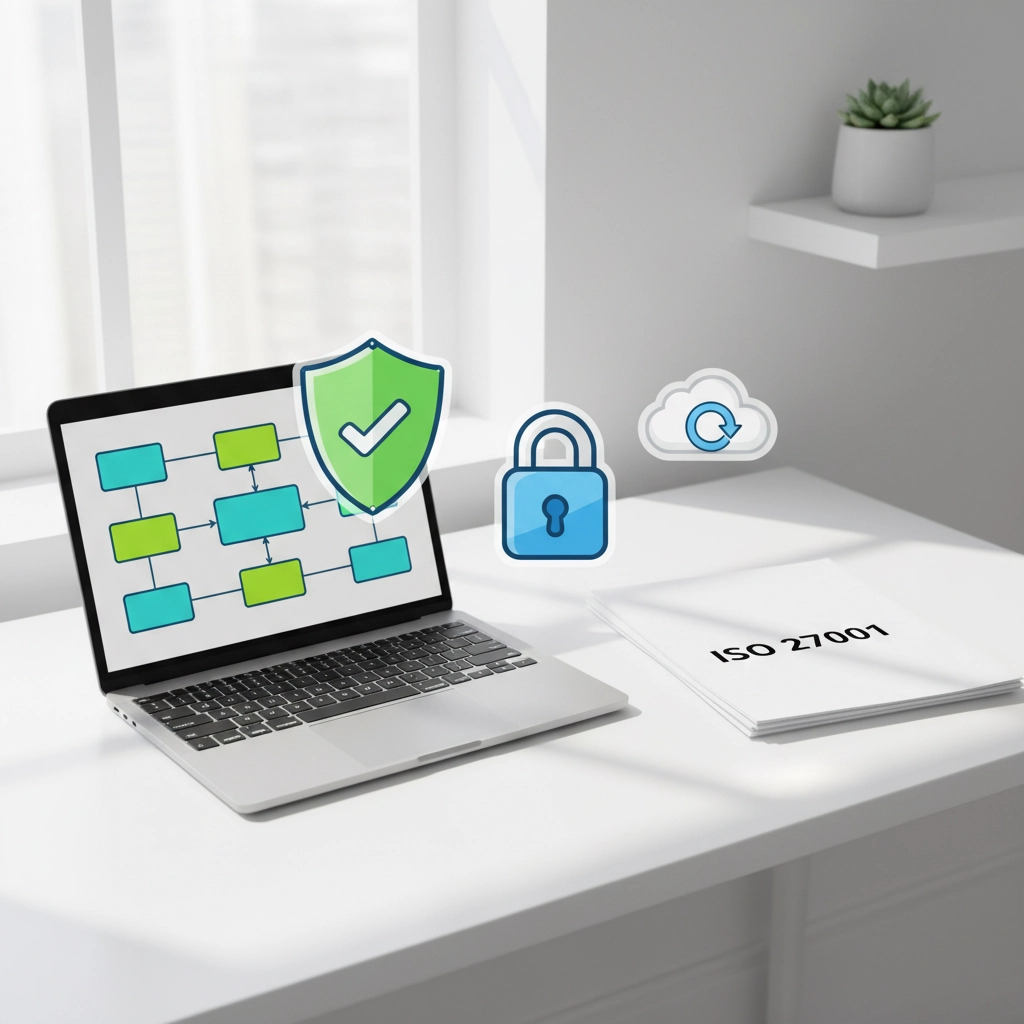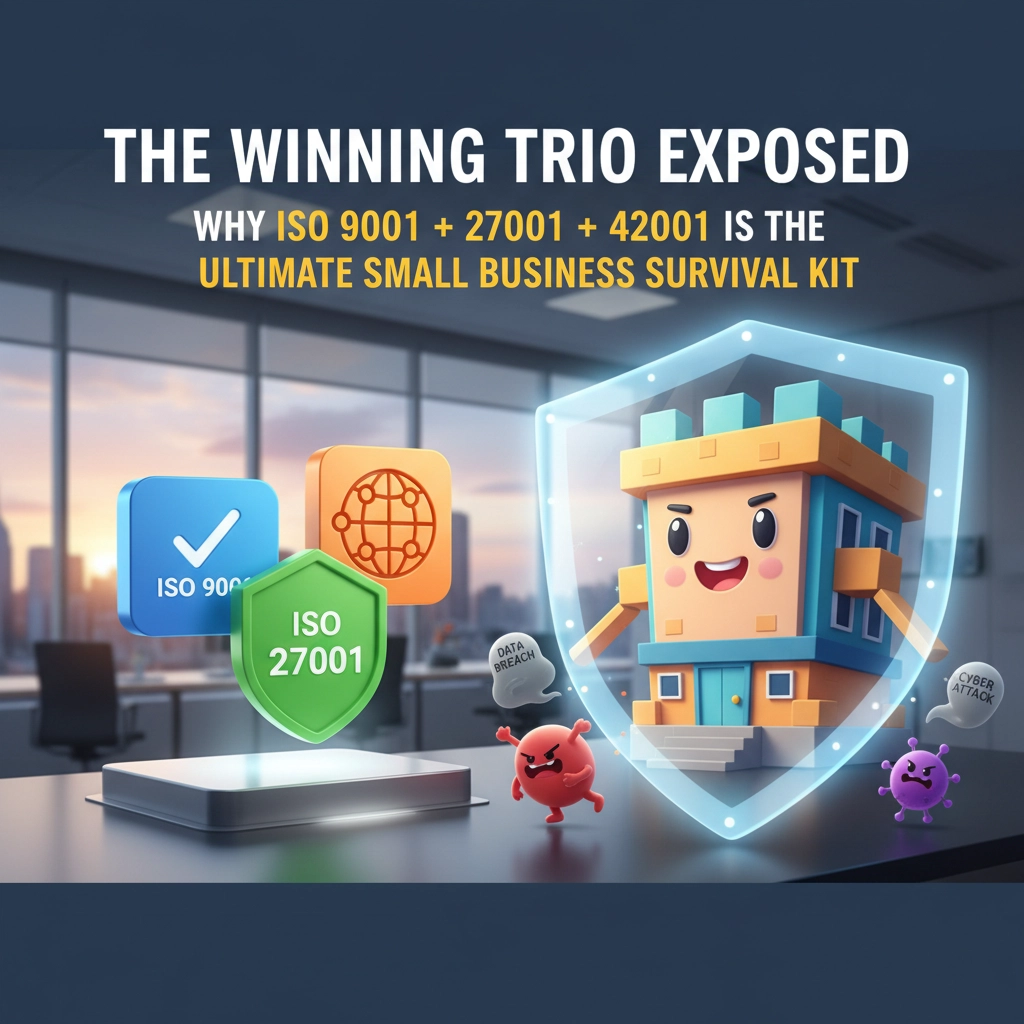
The Simple Truth About ISO 27001's 2022 Update: Why Small Businesses Are Getting It Wrong
0
0
0
Are you losing sleep over the ISO 27001:2022 update? Do you feel like you're drowning in conflicting advice about what needs to change and when? You're not alone. Across the UK, small business owners are making the same critical mistakes when it comes to understanding this update – and it's costing them time, money, and peace of mind.
Here's the simple truth: the 2022 update isn't the massive overhaul you think it is. Yet small businesses everywhere are either panicking unnecessarily or, worse, ignoring it completely. Both approaches are wrong, and both could seriously damage your business.
Let's cut through the noise and give you the straight facts about what's actually changed, what hasn't, and how you can get this right without breaking the bank or your sanity.
The Biggest Misconception: It's a Complete Rewrite
The most damaging myth floating around is that ISO 27001:2022 represents a fundamental transformation of the standard. This simply isn't true. The core framework remains exactly the same – what you're dealing with are mainly editorial changes, clearer wording, and a more logical structure.
Think of it like renovating your house versus redecorating a room. Small businesses are preparing for a complete renovation when all they need is some fresh paint and better furniture arrangement.
The reality? The standard has actually become more accessible for smaller organizations, not less. Controls have been reduced from 114 to just 93, and they've been reorganized into four clear categories that make much more sense: Organisational, People, Physical, and Technological.

What Actually Changed (Spoiler: It's Less Than You Think)
Let's get specific about what's different in 2022, because understanding the actual changes will save you from unnecessary stress:
The Structure Got Simpler: Instead of 14 confusing control areas, you now have 4 logical categories. This makes it easier to understand which controls apply to your business and how they relate to each other.
11 New Controls Were Added: These aren't random additions – they address modern cybersecurity realities like cloud security, threat intelligence, and secure coding. If you're a small business, many of these new controls might already be covered by your existing security practices.
Language Got Clearer: Much of the update involves replacing vague terms with clearer language. Where the old version said "international standard," the new one says "document." These changes make the standard easier to understand, especially for non-experts.
Better Integration: The updated standard works more seamlessly with GDPR, NIST frameworks, and other compliance requirements you might already be managing.
The Five Critical Mistakes Small Businesses Are Making
Mistake #1: Assuming It's Too Big for Them
The most common error is believing ISO 27001 is designed only for large corporations. This misconception stops small businesses from even attempting compliance, despite the fact that the standard is explicitly scalable and flexible. Your controls should match your size and risk profile – you don't need enterprise-level solutions for a 10-person company.
Mistake #2: Treating It Like a One-Time Project
Many small business owners think they can implement ISO 27001 once and forget about it. This "set it and forget it" mentality leads to compliance failures during audits. The standard requires continuous improvement and regular reviews. Budget for ongoing management, not just initial certification.
Mistake #3: Poor Risk Assessment
Without dedicated security personnel, small businesses often conduct superficial risk assessments that miss critical vulnerabilities. You can't protect what you don't identify. Take time to properly map your assets, understand your threats, and assess realistic impacts.

Mistake #4: Inadequate Documentation
Small teams often struggle with documentation, either creating too much or too little. You need enough documentation to demonstrate compliance, but not so much that it becomes unmanageable. Focus on practical, usable documents rather than impressive-looking binders that nobody reads.
Mistake #5: Lack of Management Support
When leadership treats ISO 27001 as purely an IT issue, implementation struggles. Security is a business enabler, not just a technical requirement. Management commitment isn't just recommended – it's mandatory for success.
Why These Misconceptions Exist
Understanding why small businesses get ISO 27001 wrong helps explain how to get it right. Three main factors drive these misconceptions:
Information Overload: The internet is full of complex, technical explanations written by consultants trying to justify high fees. This makes the standard seem more complicated than it actually is.
Fear-Based Marketing: Some consultants and vendors profit from complexity. They benefit when you believe implementation is impossible without expensive help.
Lack of Small Business Examples: Most case studies and success stories focus on large enterprises, making it seem like small businesses can't succeed with ISO 27001.
The Real Cost Reality
Let's talk money, because cost concerns drive many bad decisions. Yes, ISO 27001 requires investment, but the scalable nature of the standard means your costs should match your size and complexity.
Consider what not having certification actually costs:
Lost opportunities with enterprise clients who require vendor compliance
Increased vulnerability to cyber attacks (which cost UK small businesses an average of £65,000 each)
Potential regulatory penalties
Damage to reputation after a security incident
Many small businesses spend more on their annual software subscriptions than they would on basic ISO 27001 compliance.

The October 2025 Deadline You Can't Ignore
Here's what you absolutely must understand: all organizations must transition to ISO 27001:2022 by October 31, 2025. This isn't optional. If you're currently certified under the 2013 version, your certification becomes invalid after this date.
Don't panic – but don't procrastinate either. The transition process is manageable if you start now:
Review your current controls against the new Annex A structure
Update your documentation to reflect the reorganized framework
Address any gaps with the 11 new controls
Schedule your transition audit well before the deadline
How to Get It Right: Your Practical Action Plan
Start with a Reality Check: Assess your current security practices honestly. You might already be doing more than you realize. Many small businesses have informal processes that just need documentation and slight adjustment.
Focus on Risk Management: Don't try to implement every possible control. Focus on the risks that actually matter to your business. A retail shop and a software company face different threats and need different protections.
Think Integration: Look for ways to integrate ISO 27001 requirements with your existing business processes. Don't create parallel systems – embed security into what you already do.
Get the Right Help: You don't need a massive consulting firm, but you probably do need some expert guidance. Look for consultants who understand small businesses and can scale their approach to your needs and budget.
Your Next Steps
The simple truth about ISO 27001:2022 is this: it's more accessible to small businesses than ever before, but only if you approach it correctly. Stop letting misconceptions paralyze your decision-making.
This week, take these three actions:
Download the actual 2022 standard and read Annex A yourself
Assess which controls you already have in place
Create a realistic timeline for addressing any gaps
Don't let another month pass while your competitors gain the competitive advantage that comes with certification. The October 2025 deadline isn't going away, but with the right approach, you can meet it confidently and cost-effectively.
Ready to tackle ISO 27001:2022 the right way? Contact our team for a no-nonsense assessment of where you stand and what you actually need to do. We specialize in making complex standards simple for small businesses like yours.






